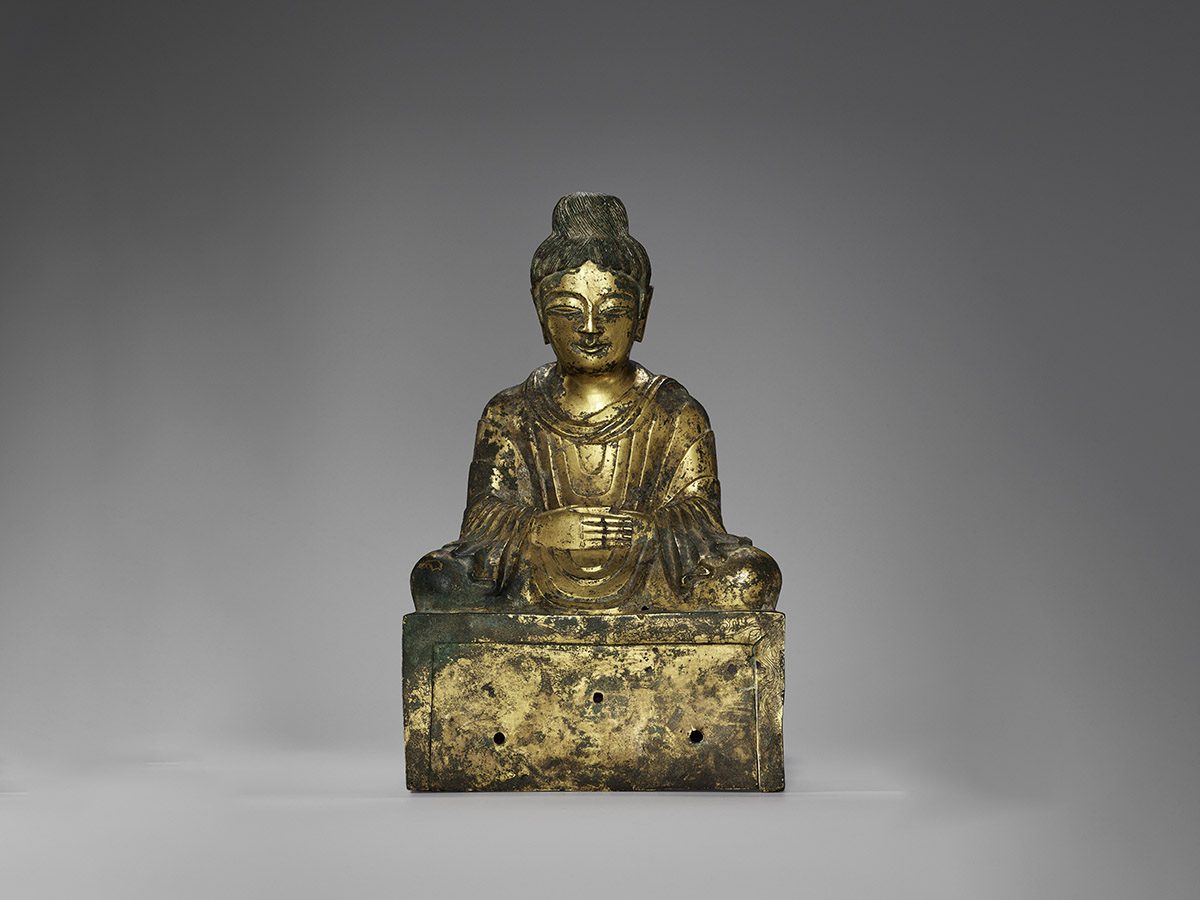China’s earliest known dated Buddha tells the story of early Buddhist art in China.

Buddha dated 338
China; Hebei province
Later Zhao kingdom (319–351)
Bronze with gilding
The Avery Brundage Collection, B60B1034
Made 400 years after Buddhism was introduced to China from India, this is the earliest known dated Buddha sculpture produced in China. At about 16 inches tall, it is among the largest bronze sculptures to have survived from the era and was cast using sophisticated techniques for its day. Although it shows the stylistic influence of the art of ancient Gandhara (a region now largely in Pakistan that connected trade routes between Europe and Asia), Chinese characteristics make this statue an important milestone in the development of Buddhist art in China.
